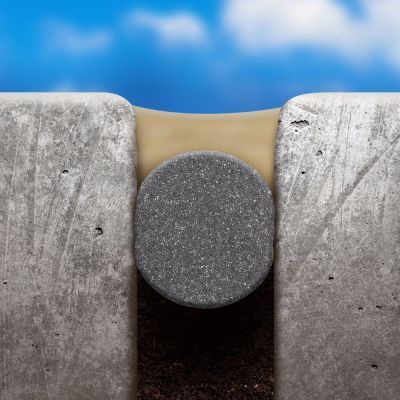Topics:
Search for topics or resources
Enter your search below and hit enter or click the search icon.
Providing your email address will keep you updated should we need to provide updates specific to your location.

If you're struggling with concrete driveway cracks, you can take matters into your own hands and repair them like a pro.
At A-1 Concrete Leveling, we've been repairing concrete for over 30 years, and we're excited to share our expert process for caulking concrete cracks and joints.
In this comprehensive guide, we'll walk you through how to fill cracks in concrete, the tools you’ll need to get started, and some additional driveway crack repair tips.
Whether you're a seasoned DIY enthusiast or just looking for a weekend project, we've got you covered.
Select a flexible polyurethane caulk designed for joint and crack sealing. You have the option of self-leveling or non-sag caulk. Trusted brands like Chemlink and Sika offer excellent choices.
Self-leveling concrete caulk is thin and runny, and it leaves the surface level without needing to be smoothed out manually.
Non-sag concrete caulk is thicker and holds its shape, but it has to be smoothed out by hand. It can be used in conjunction with self-leveling caulk to prevent leaking.
Make sure you have a caulk gun that matches the size of your caulk tubes.
For wide expansion joints or deep cracks, invest in a roll of backer rod. This simple addition can save you money by reducing the amount of caulk needed to fill the cracks.
Backer rod is made out of foam similar to a pool noodle. You can actually use pool noodles instead if you don't mind cutting them up to fit.
A spray bottle filled with soapy water will help you achieve a smooth finish, especially when using non-sag caulk.
To blend the caulk in with your concrete, keep dry sand on hand.
Before applying caulk, thoroughly clean and clear debris from expansion joints or cracks. A pressure washer can be a handy tool for this job. Make sure the concrete is completely dry before moving on.
If your concrete has settled, it’s best to lift it back to its original position before moving on to the next steps.

Using backer rod is recommended for cracks wider than ½ inch and at least an inch deep. The backer rod should be slightly larger in diameter than the crack.
Push the backer rod down into the crack, at least ½ inch below the concrete surface, leaving space for the caulk to sit on top.
Pro Tip: You can also use playground sand for this purpose. Fill the crack with sand until all voids are filled, tapping the concrete gently with a 2x4 to make sure it’s distributed evenly.
To apply the caulk to the crack, first cut off the end of the caulking tube point with a sharp knife. Cut at an angle, and try to keep the opening size relative to the size of the crack. This will help keep you from over-filling the crack.
Apply a consistent bead of caulk along the entire opening. The goal should be to completely seal the crack, but allow the caulk to be slightly lower than the surface of the slab to protect it from damage due to foot or vehicle traffic.
For self-leveling caulk, remember to seal the crack ends with non-sag caulk first.

Pro Tip: Using too much caulk can create a mound higher than the surface of the concrete, leading to premature wear. Using too little caulk can leave gaps for water to flow through the crack and beneath the slab.
When using non-sag caulk, promptly smooth it out with soapy water before it sets. First, spray the caulked area with the soapy water, then gently rub your finger along the caulk. Disposable gloves can be handy for this task.
Try not to push the caulk onto the surrounding concrete, as it's hard to clean off and can make the job look messy.

To achieve a textured finish that better matches your concrete, consider sprinkling sand over the wet caulk. Do this while the caulk is still wet so it sticks.
Follow the caulk manufacturer's instructions for drying time. Avoid foot traffic or driving over the repaired area until the caulk has fully set.
Rigid materials like concrete or mortar don't accommodate the natural expansion and contraction of concrete, so they will end up cracking, too.
If your concrete driveway is out of level, it’s better to lift the uneven slabs with concrete leveling before caulking. This way, you won’t ruin your caulk job or widen the cracks when lifting it later.
Getting caulk to lay down smoothly and look the way you want it to is a skill in and of itself. Professionals do this day in and day out, so if the visual results of your caulking job are a priority, then it might be worth it to spend the extra amount to hire the experts.
Now that you know what it takes to repair those pesky cracks in your concrete driveway, you can confidently take on this DIY project.
However, if you have uneven concrete that needs to be lifted before caulking, or you prefer to leave the caulking up to the professionals, request a free onsite cost estimate with an A-1 expert near you!
Sarah Etler joined A-1 Concrete Leveling after receiving her Bachelor of Arts degree in English from Northern Kentucky University. As A-1's Content Marketing Manager, she works closely with industry experts to produce content that will best answer questions related to concrete repair and maintenance practices. Sarah loves living a life full of discovery and is excited every day to see what new things she can learn and share with those around her.
Topics: